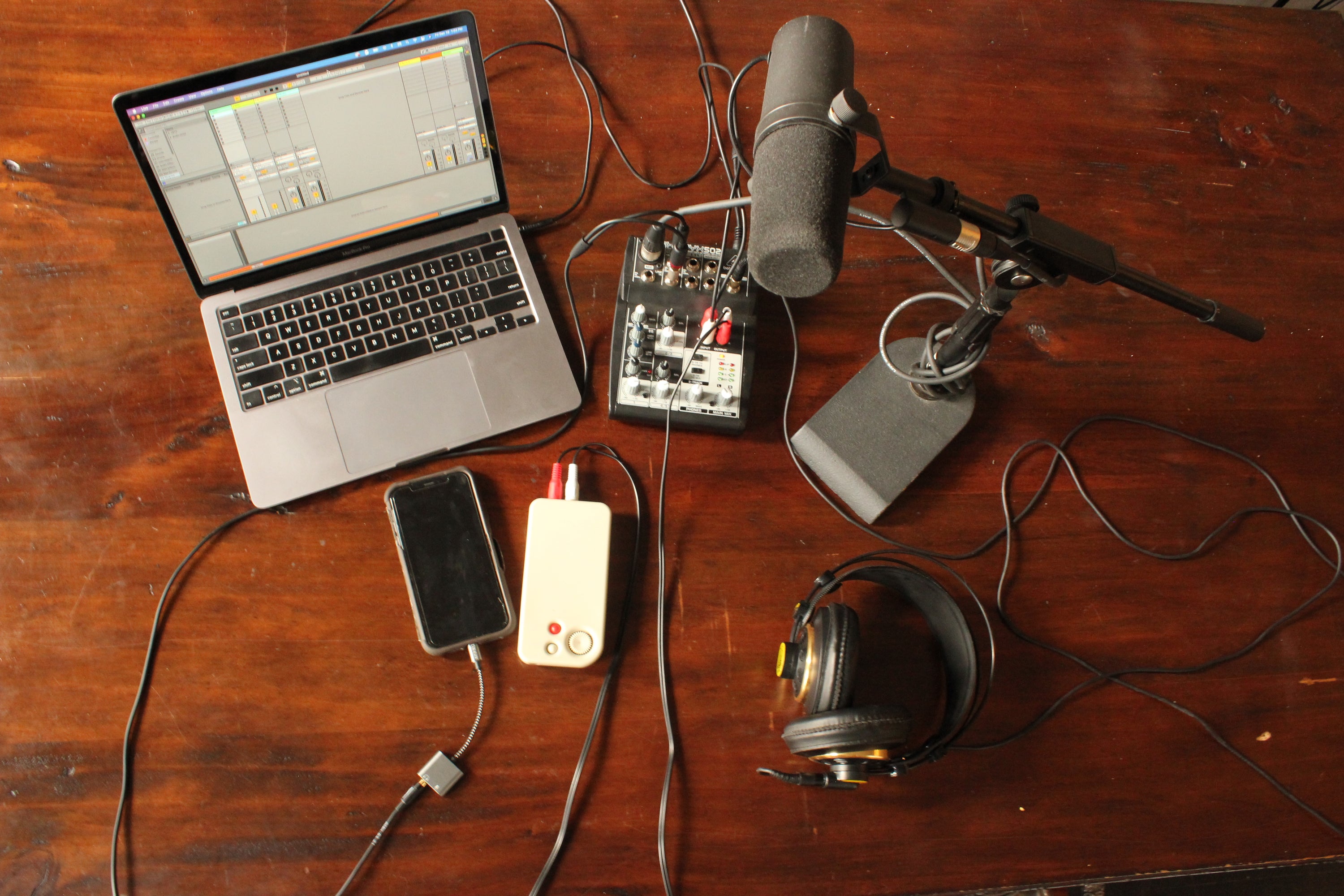
How To Do a Call-In Radio Show Using Your Blast Box
We love seeing all the creative ways broadcasters are using Blast Radio to connect with fans and fellow artists. One particularly fun use case is hosting a call-in radio show to feature guests and highlight new music. This format is a great way to engage with other interesting people, while giving audiences an opportunity to listen in:
- Matthew Dear discussed his production setup and offered insight on home repairs with fans and listeners from across the globe.
- Teen Daze invited producer Joel Ford on to talk about working on Teen Daze’s new album, Interior, and the general arc of their respective careers.
- Roy Molloy has featured several guests on Illegal Radio, including Teen Daze, Emily Panic, and bodyimage, for Q + A’s, interviews, and general hijinx.
Want to try doing a call-in show yourself?
There are lots of audio setups that will work, but below is one path you can take, focused on simple, affordable solutions that will all result in a professional-sounding interview.
Another option would be to use the Blast Radio plugin for broadcasting from your DAW, but we will cover how to do that in a future post.
Here’s what you’ll need:
- Your Blast Box
- A simple audio mixer
- A microphone
- Your phone
- 1 headphone-to-dual 1/8" cable for your phone (and a dongle if you use an iPhone)
- 1 cable to connect any background music to your mixer
First, your mixer:
The mixer allows you to route multiple audio sources to one central location. From there, you can connect the entire setup to your Blast Box.
You likely already have a mixer, but if you don’t, even the most basic options have multiple inputs for different audio sources.
- This guide from The Wire Realm has a variety of options ranging from $200-$1,000
- Or you can go with something as simple as this Behringer mixer for $40
Next, connect your mic to the mixer:
Your mic will likely have either an XLR output or an RCA output. Either of those will run into the mixer and allow you to control the levels on that channel.
Next, connect any other audio sources:
If you’re using a computer, record player, or instrument to play background audio, connect that to the mixer as well. A computer can be connected with either (1) a simple headphone-to-RCA cable into an RCA input like this one for $8 (2) or a headphone-to-dual 1/8" cable into an actual mixing channel like this one for $9.
Next, connect your phone audio:
You can put your phone on speaker and hold it next to the mic, but that will likely result in poor audio quality, making it hard for your listeners to really understand your caller. The better option is to route your phone’s audio into your mixer.
- For iPhone: Use a simple dongle like this one for $20 that will take the audio from your phone. Connect to the mixer with either a simple headphone-to-RCA cable into an RCA input like this one for $8 or a headphone-to-dual 1/8" cable into an actual mixing channel - like this one for $9
- For Android: Same as above, but you can probably skip the dongle and just go straight through the headphone out jack.
You will talk into your phone and your guest’s responses will be channeled into the mixer.
Finally, connect the mixer to your Blast Box
Blast Box has a simple RCA input that will let you connect any audio source to it. Use any basic RCA-to-RCA cable to connect the mixer to your Blast Box.
That’s it - you’re ready.
Do a few test runs by having friends call you while you’re in Sound Check mode. Play with your levels on the mixer until you get a sound you like. After that, you’re ready to host your own call-in show.
Below is an image of everything listed above -- this is a snapshot of a real setup one of our team members actually uses.
